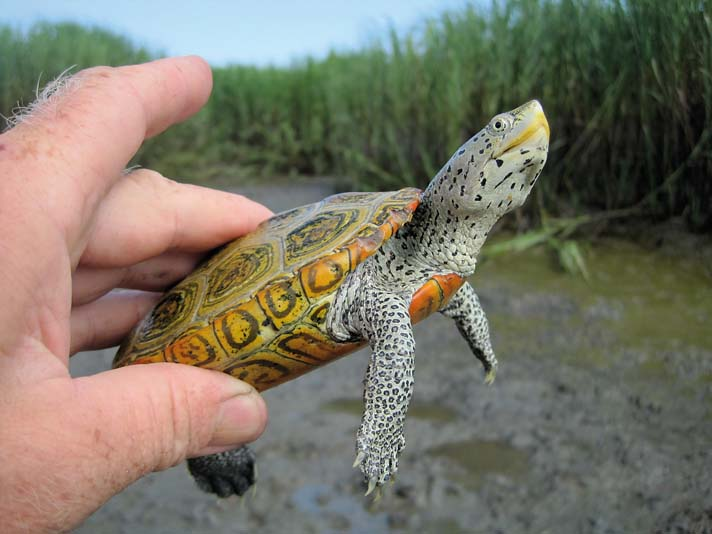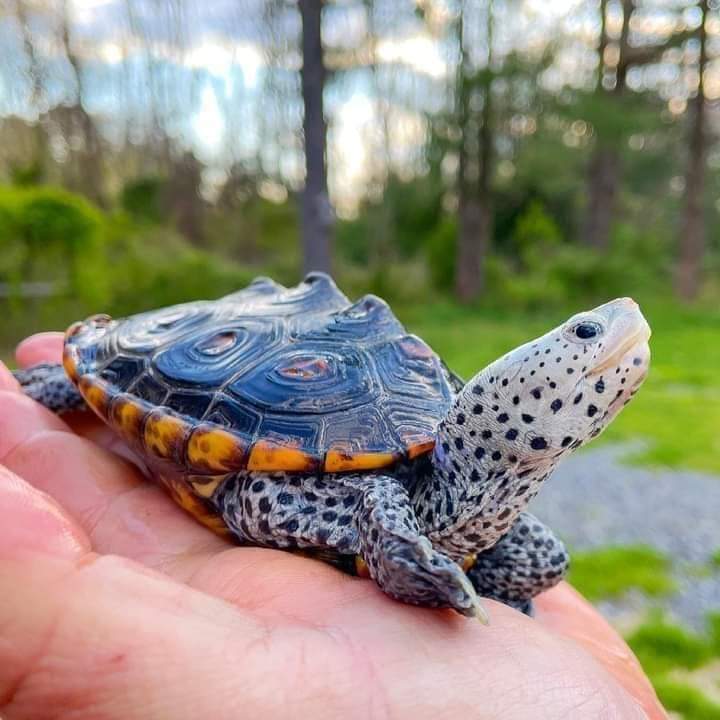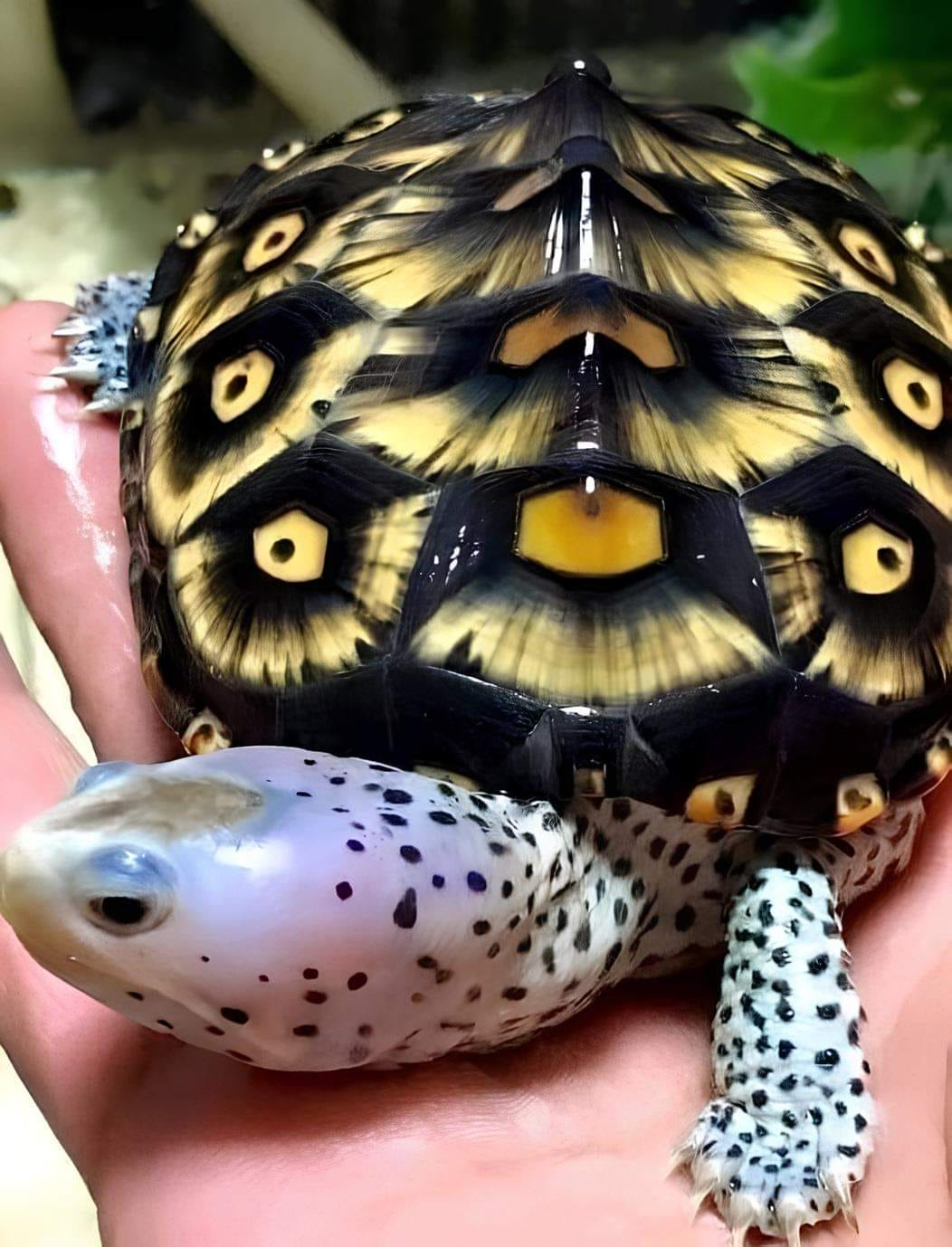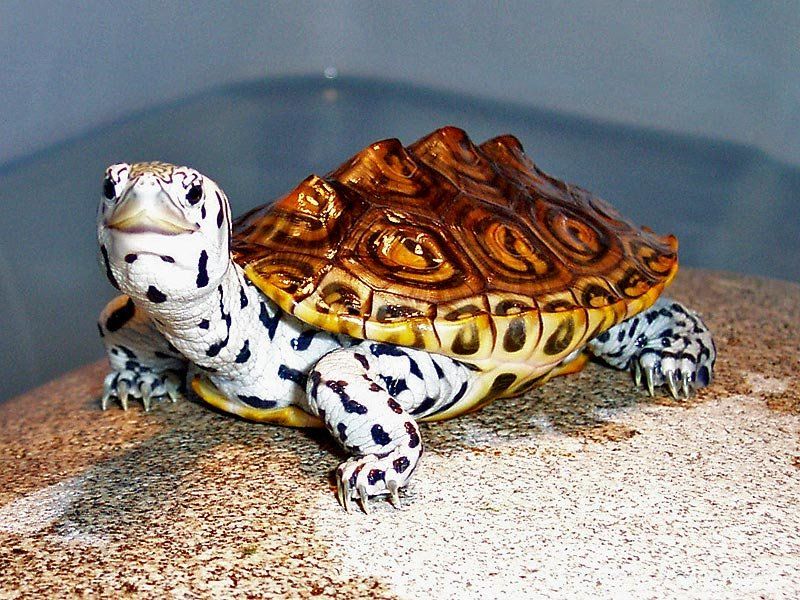The diamondback terrapin (Malaclemys terrapin) inhabits the coastal brackish and saltwater marshes of the eastern and southeastern U.S. It is a medium-sized turtle, with males reaching about 5 inches in carapace length and females significantly larger at 9 inches. Generally, the carapace and skin coloration of a terrapin is gray to whitish, with varying patterns of black spots and streaks. Some even have black “mustaches.” Occasionally, yellow blotches are found on the carapace scutes, and an orange tinge may be present on the marginal scutes of some individuals.

Kurt Buhlmann
When being handled, terrapins aren’t usually known to bite. Still, be careful if handling large females due to their big heads and powerful jaws.

Terrapins are members of the family Emydidae, which includes all freshwater painted turtles, sliders, cooters and map turtles, as well as some others. The diamondback terrapin’s closest relatives are map turtles of the genus Graptemys.

Terrapins are unique among North American turtles because they live exclusively in saltwater-influenced habitats. Adults are often observed in salt marsh creeks at low tide but are less obvious during high tides, a time when large predators such as sharks are more likely to enter the habitat. Turtle biologists suspect that terrapins spend high tide hidden in the grasses and mud of the salt marsh flats, where they also feed on periwinkle snails. Hatchling terrapins seem to occur in grassy mud flats closer to shore and spend their early years hiding in shallow water, mud and under mats of dead grasses.


